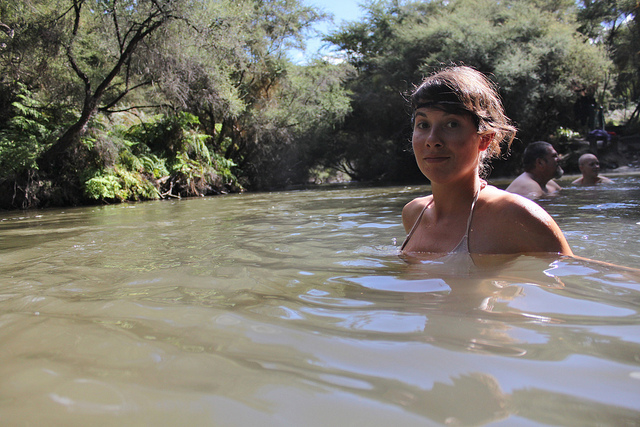
You might also like:
1. The North Island and the South Island always, always, always take the definite article.
2. Our race relations look nothing like Australia’s, but that doesn’t make them great.
Despite being neighbours and both ex-British colonies, New Zealand and Australia have extremely different histories. This includes major differences in race relations. New Zealand’s indigenous people are called the Maori, not Aboriginals, as in Australia. The Maori are ethnically Polynesian, and share cultural traits and language similarities with Hawaii, Samoa, Tonga and other Pacific islands. New Zealand’s original European settler population interacted with Maori very differently to how Australia’s settlers interacted with Aborigines, and this is still evident today. Maori make up roughly 15% of New Zealand’s population, Te Reo Maori is recognised as an official language of New Zealand, and Maori politicians, academics, lawyers, doctors and other professionals are active, visible and respected. All of this contrasts very markedly from the status of Aboriginal and other indigenous people in Australia.
However, New Zealand is not a race relations paradise. There’s still a long way to go before Maori and non-Maori New Zealanders can share equal education, income, health, domestic violence and incarceration rates. We don’t like visitors to New Zealand to assume that we are just like Australia, but neither is it accurate to hold New Zealand up as some kind of race relations ideal. Being ‘better than’ isn’t necessarily ‘good enough.’
A good way for travellers to New Zealand to learn about New Zealand’s distinct history, and the place of Maori people in it, is to visit one of the country’s best museums: Te Papa on Wellington’s waterfront, or the Auckland War Memorial Museum.
3. Lord of the Rings didn’t ‘put New Zealand on the map.’
It was always there. Maybe you just didn’t know about it. New Zealand has gained a lot of fame, recognition and tourism dollars since the films were made, so many Kiwis hold them dear. But New Zealand didn’t rise out of the Southern Pacific Ocean in 2001, and claiming that the films ‘put New Zealand on the map’ only reflects international ignorance about the country. (And you do know that most of the landscape scenes were CGI, right?
4. The difference between a kiwi and a kiwifruit.
You sound pretty silly in New Zealand when you pick up a green, fuzzy fruit and say you’d like to eat this kiwi. It’s a kiwifruit in New Zealand. Kiwifruit. Dropping the ‘fruit’ means you’re either referring to a nocturnal flightless bird about the size of a chicken, or a person from New Zealand.
5. We have no dangerous land animals. Australia got them all.
Geologically, New Zealand separated from Australia around 60-85 million years ago, meaning that the two countries’ ecosystems developed very differently. There are very few mammals native to New Zealand at all — just a species of bat, and dolphins and seals. There are no native predatory animals, meaning that bird species flourished and became dominant. None of the dangerous beasts lurking around every corner in Australia — snakes, crocodiles, dropbears — can be found in New Zealand. So relax, you’re safe here.
There are lots of unique birds and a few interesting reptiles, though. Kiwis are a flightless nocturnal bird about the size of a chicken, and can be seen both in the wild and in captivity. They are pretty elusive, so check out Kiwis for Kiwi’s directory of places to see them before just heading out into the bush and hoping for the best. Another awesome animal unique to New Zealand is the tuatara, which has been called a living dinosaur. They are the last survivors of a group of reptiles that thrived during the dinosaur era, and can live past 100 years. They used to be common throughout New Zealand, but now only survive in the wild on a number of off-shore islands. You aren’t allowed to land on most of these islands, as a way of protecting the tuatara’s habitat. You can see tuataras in captivity though, in places such as the Auckland Zoo and the National Aquarium in Napier.
6. Our language is liberally sprinkled with Maori words.
The native Maori people make up about 15% of the population, but even most non-Maori New Zealanders liberally sprinkle their English with words from the Maori language, Te Reo Maori. You don’t need to set about learning Te Reo Maori before visiting because everyone speaks English, but it is a unique, Kiwi version of English. You’ll have an easier time conversing with ordinary New Zealanders if you become familiar with the most common words. You may not need to use them, but it’ll help to understand a few words. Most useful: Aotearoa (the Te Reo name for New Zealand), Pakeha (non-Maori New Zealander of European descent), kia ora (hello), haere mai (welcome), kia kaha (good luck/be strong), whanau (family), kai (food), hui (a meeting), aroha (love), kapai (good), mana (reputation/influence).
If you want to go a step further, learn some Maori online or through a new app, Te Pumanawa.
Source: matadornetwork.com
